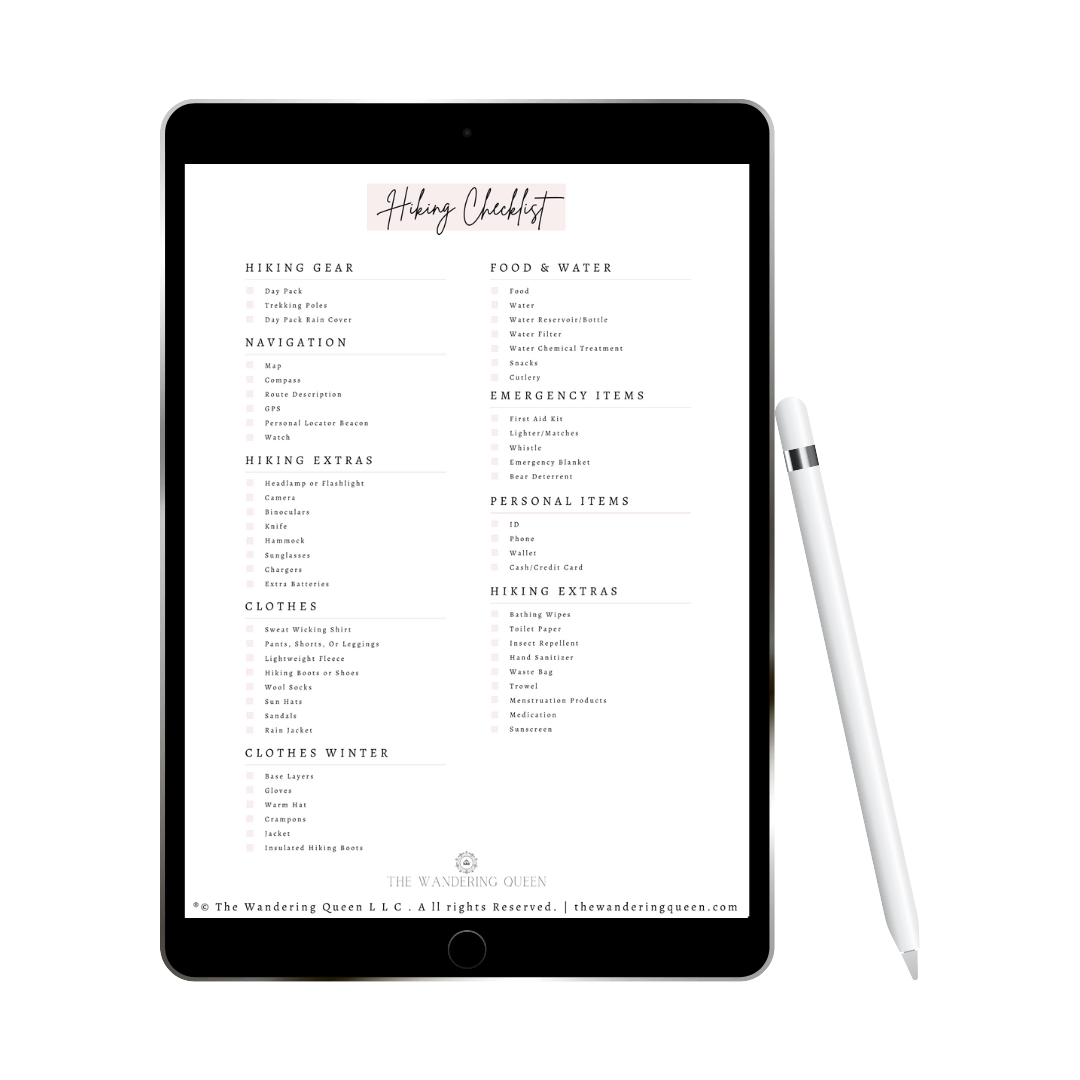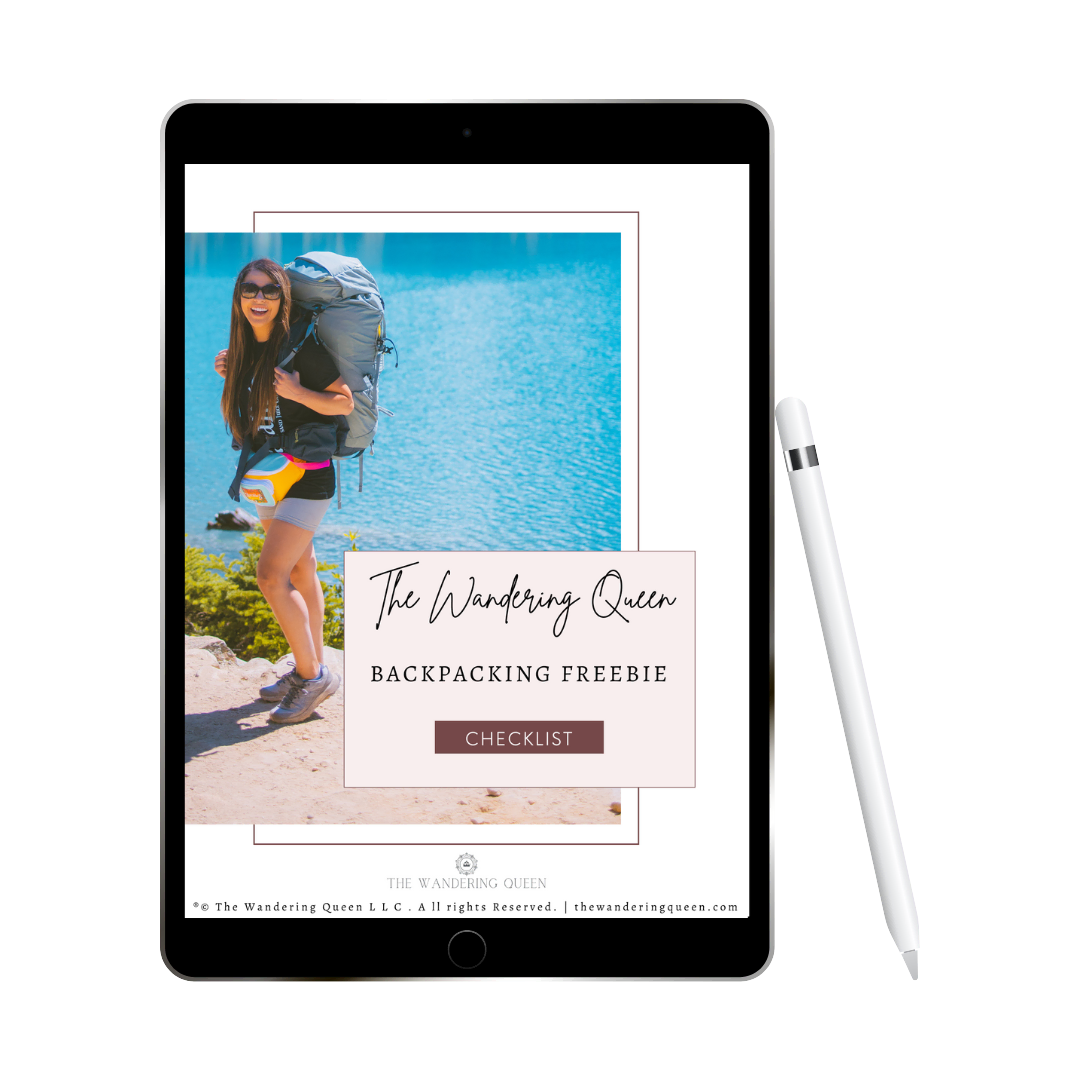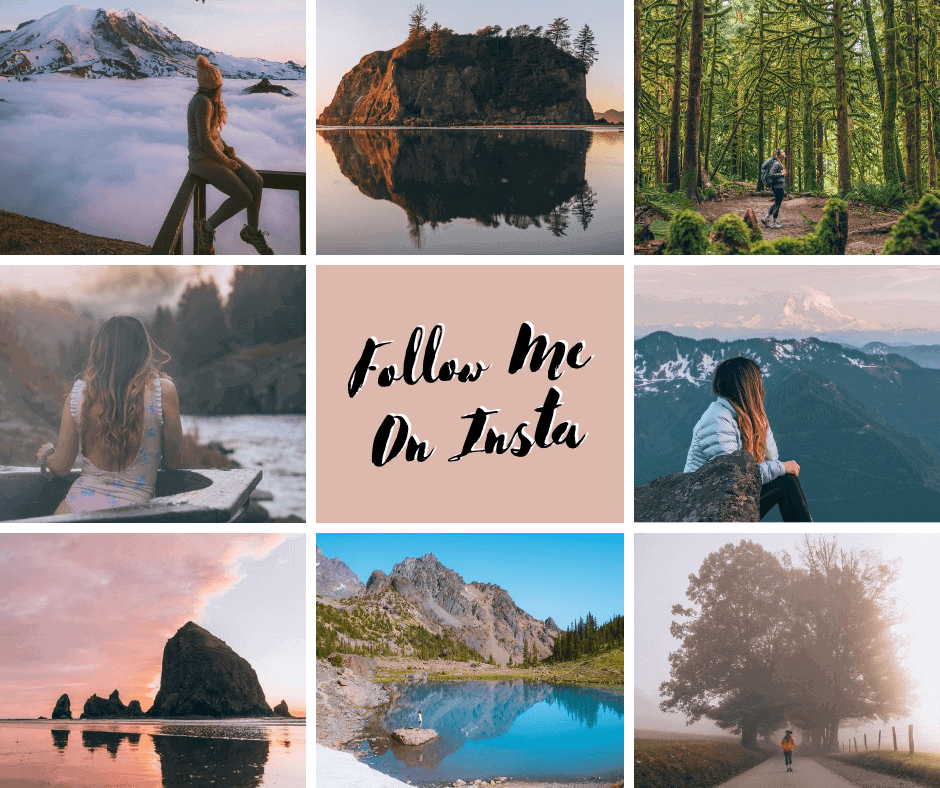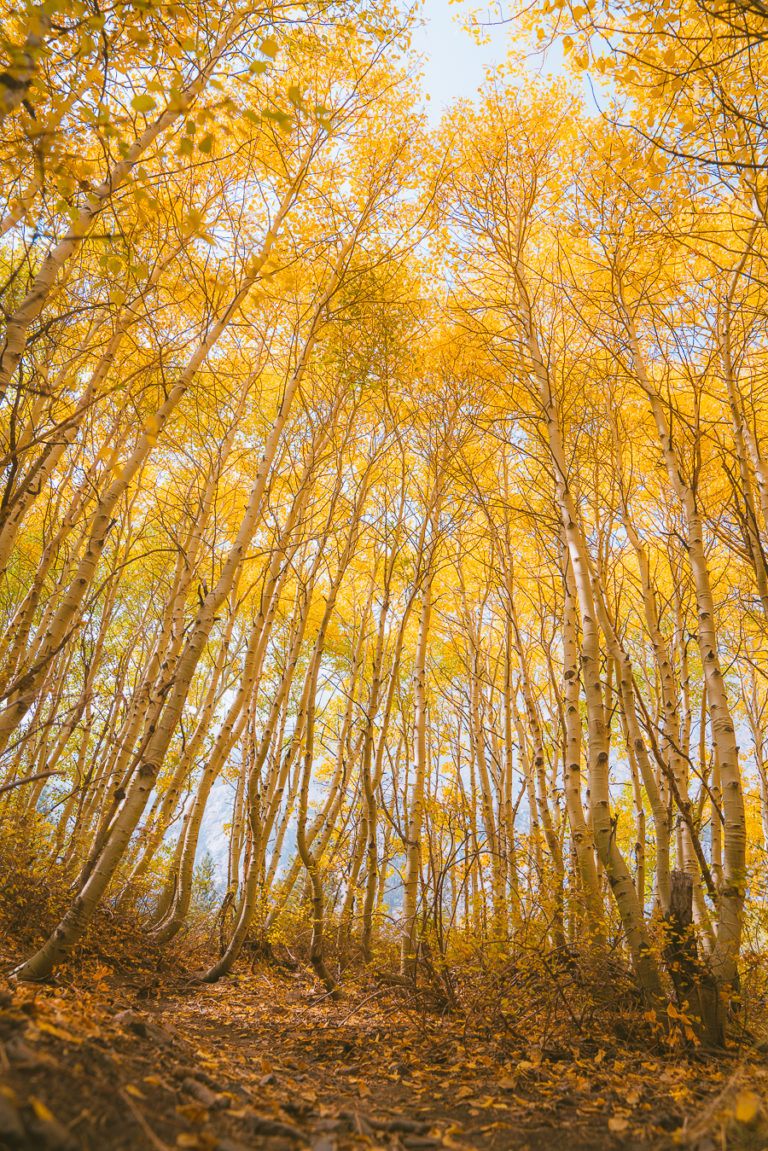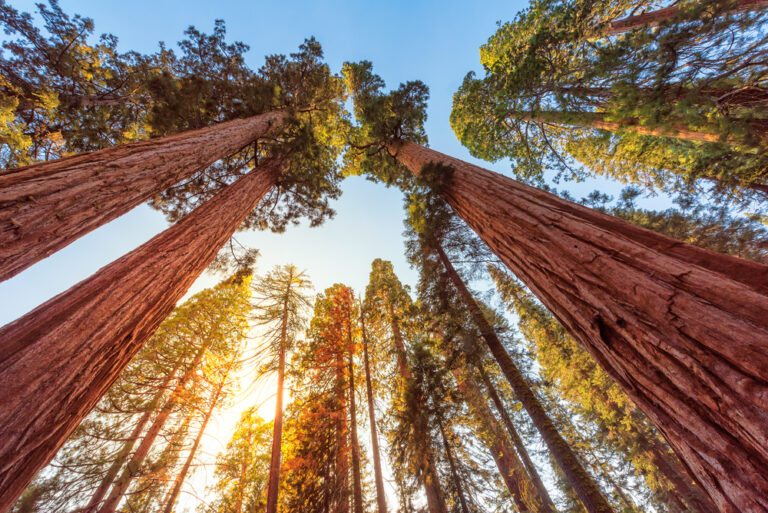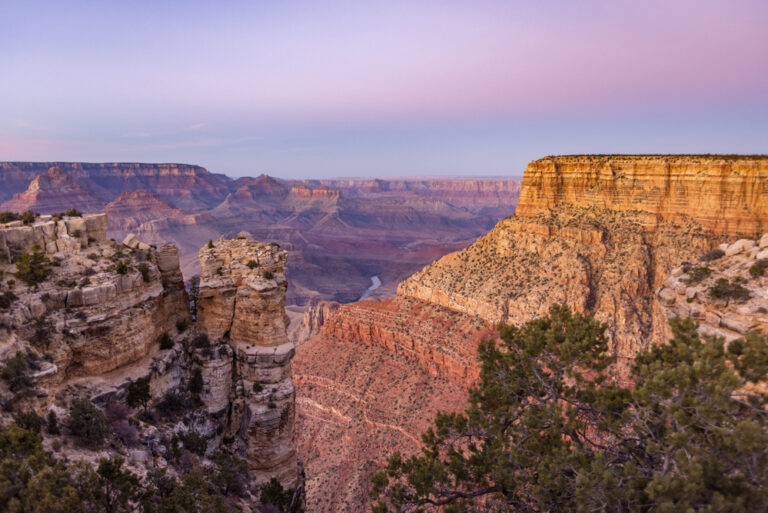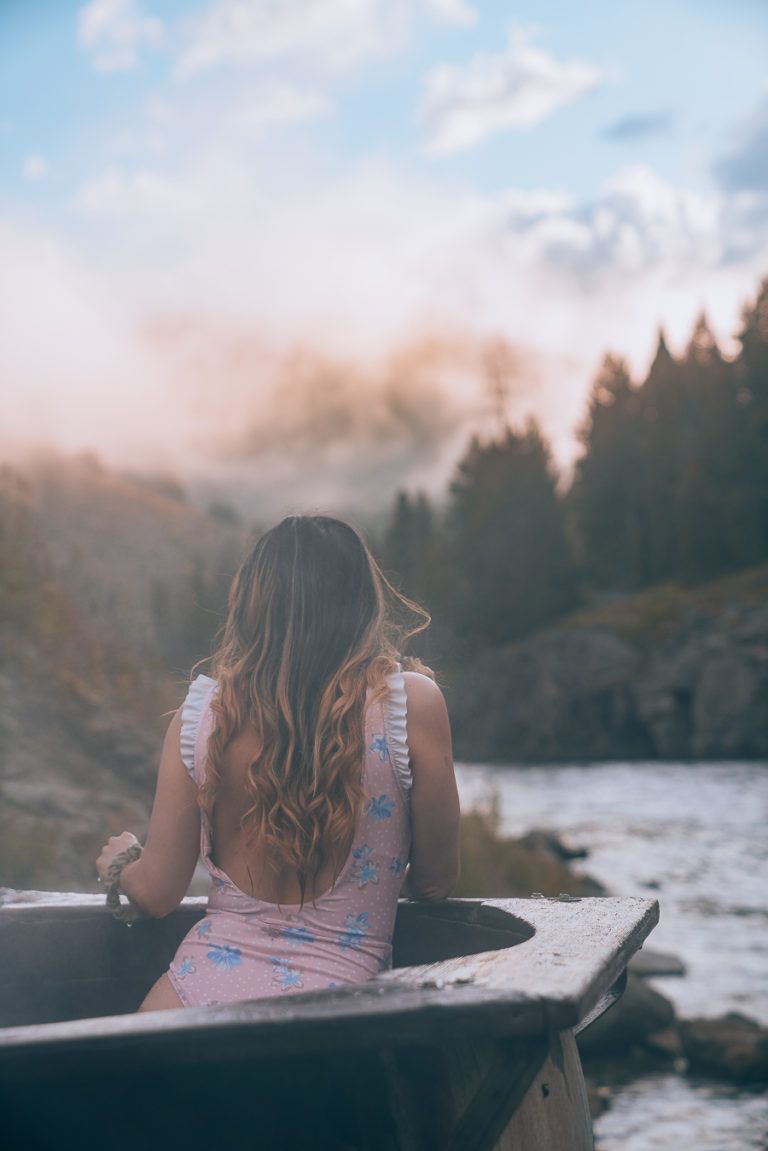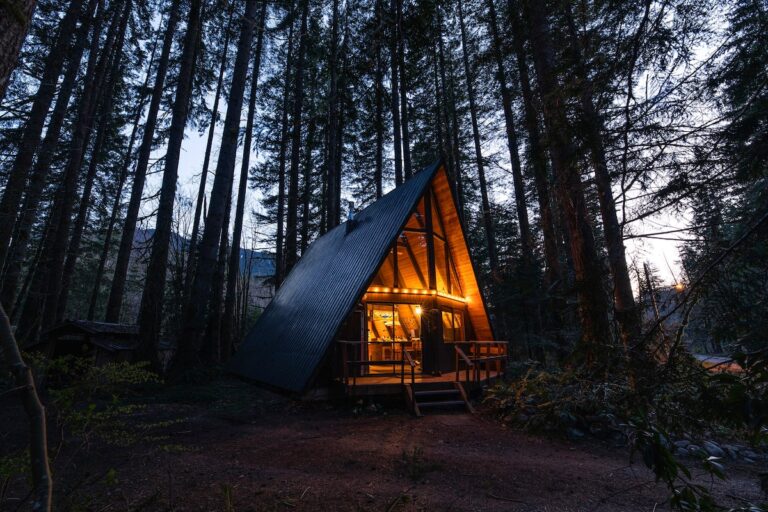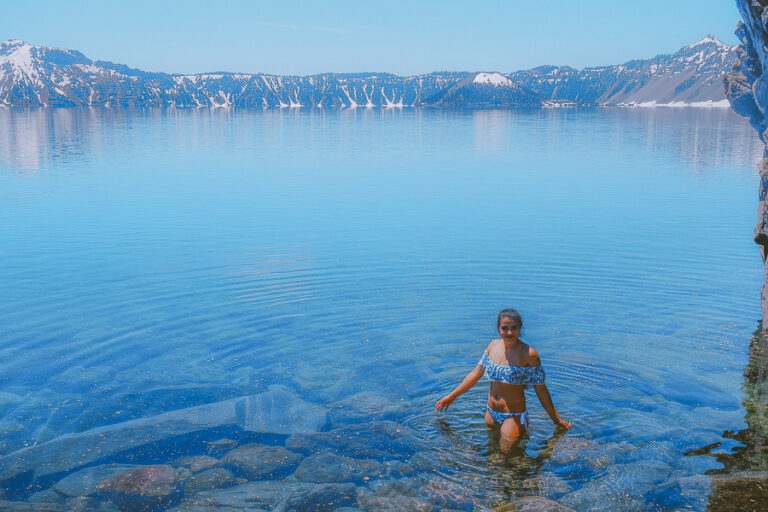Joffre Lakes Trail | Tips for Hiking This Provincial Park Route
Emerald blue lakes and jagged mountains aren’t the scene from a fairytale. This is what you can expect to admire when tackling the Joffre Lakes Trail.
When searching for one of the best hikes near Pemberton, Canada, the trek to these Matier Glacier-fed lakes quickly comes out on top. Aside from the eclectic scenery, this is a trek with plenty of perks, including a campsite at the trail’s end.
With the Canadian Rockies as your backdrop for the ever-blue lakes, taking on this hike may seem like a no-brainer. That said, there’s a lot you need to consider before tackling this lengthy trail.
So stick around to learn everything you need to know, from how to get there to when to visit this unforgettable hike on your Canadian Rockies itinerary.

Disclosure: This post contains affiliate links. If you click one of them, I may receive a small commission (for which I am very grateful for) at no extra cost to you.
How to Get to Joffre Lakes Provincial Park
As there’s only one road going through Joffre Lakes (Duffey Lake Road), it’s fairly easy to get to the trailhead. The nearest place you can fly to is the Vancouver International Airport (YVR), which is around 137 km (85 miles) away.
Whether you’re flying in and then renting a car or driving straight from your hometown, here’s a breakdown of the best routes from the closest major cities.
Route From Seattle to Joffre Lakes
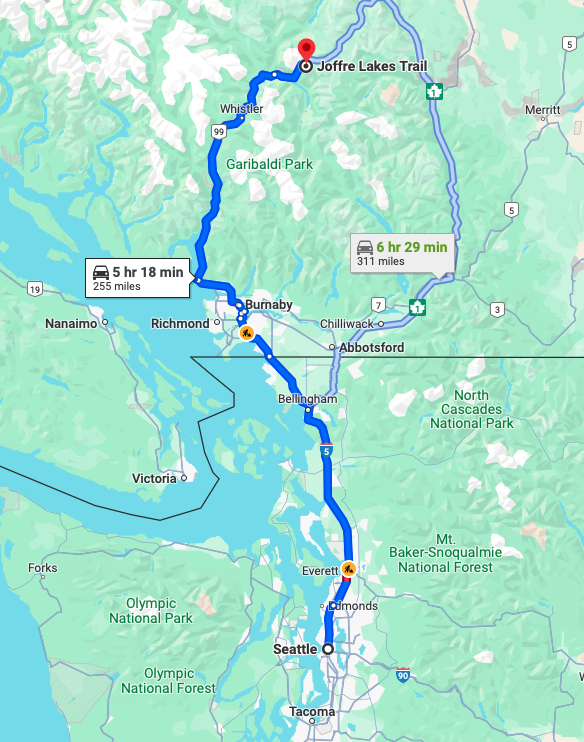
Seattle is the nearest major city in the USA to Joffre Lakes in Canada. The average travel time is around five hours as you cover a distance of roughly 410 km (255 miles).
Starting in Seattle, you’ll travel for 250 km (155 miles) along the I-5 northwards. This will take you all the way to Vancouver, where you’ll then join onto BC-99 northwards. This route is also known as the Sea to Sky Highway, taking you a further 164 km (102 miles) all the way to Joffre Lakes.
Route From Vancouver to Joffre Lakes

If you choose to fly into Vancouver and rent a car, then you can expect travel time to be cut in half to two-and-a-half hours. It’s a fairly straightforward journey along the BC-99 northwards for 164 km (102 miles).
Being such an easy-to-follow route, this is one of the preferred ways to get to Joffre Lakes Provincial Park.
Route From Kamloops to Joffre Lakes
If you’re already on a Canadian road trip and you find yourself in the northern regions of British Columbia, Kamloops is the closest city to Joffre Lakes.
The route from the city follows BC-1 (Trans-Canada Highway) westbound for roughly 72 km (45 miles). You’ll then merge onto BC-97 (Cariboo Highway) northbound for 11 km (7 miles) before turning onto BC-99. It’s then plane sailing for 143 km (89 miles) along BC-99 all the way to Joffre lakes.
In total, you can expect a travel time of just over three hours.
Download my free Outdoor Photography Guide
Best Time to Visit the Joffre Lakes Hike
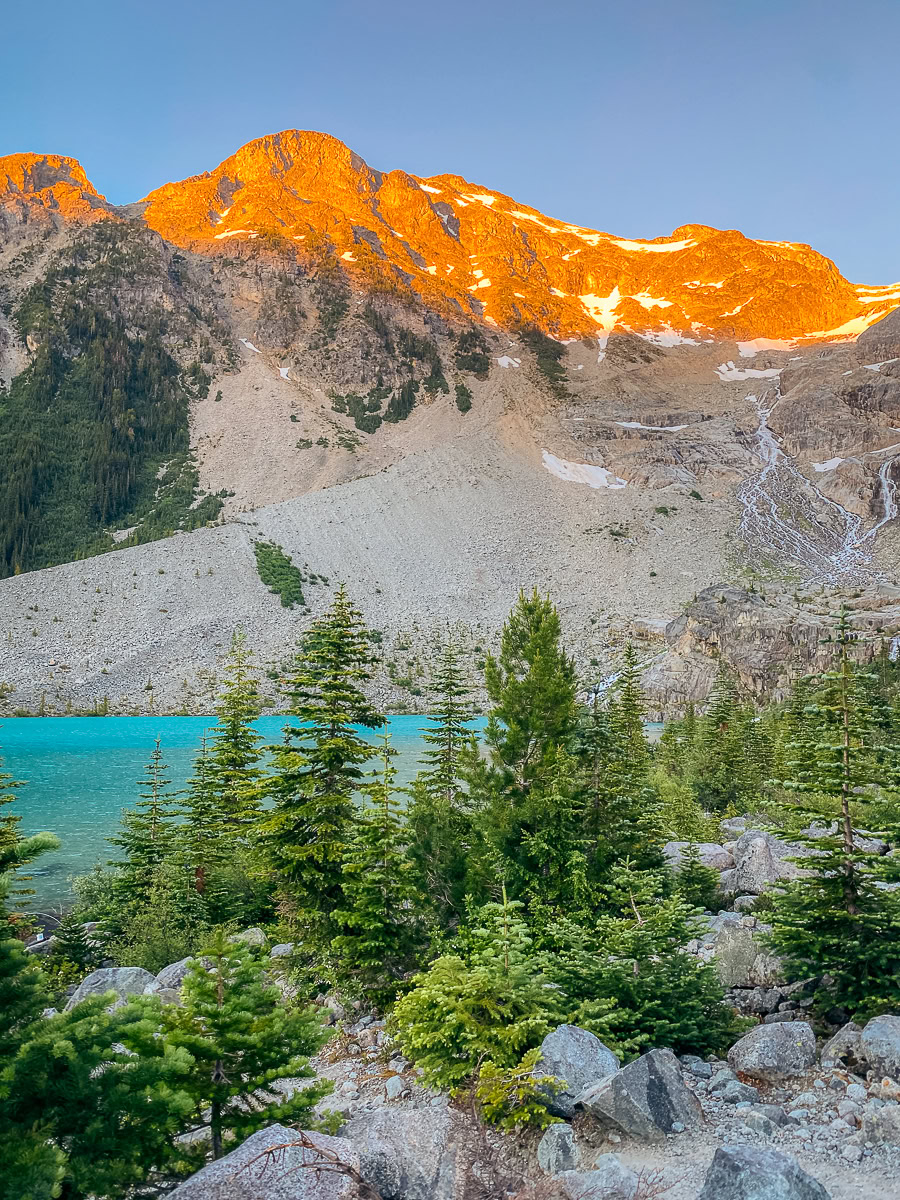
While the Joffre Lakes Trail has been upgraded to make it accessible year-round, there’s definitely a ‘best time to visit.’ This is between mid-June and late September when the lakes showcase their distinct glacial blue color thanks to the melting ice caps.
This is also the warmest time of year to visit, so the icy waters are a bit more bearable for swimming — they’re still freezing cold, though.
That said, here’s a breakdown of each season in case you can’t make it to the trail between June and September.
Hiking the Joffre Lakes Trailhead in Winter
December — February
As far as Canadian winters go, Joffre Lakes is fairly moderate. You can expect highs of around 4°C (39°F) and lows of -5°C (23°F). That’s still pretty cold, but not at all the worst of it compared to some other regions of British Columbia.
You can expect big snowfalls during this time of the year, which can hinder your chances of hiking the trail. However, Joffre Lakes is still open in winter, so if you’re looking to hike in the snow, this is the perfect time to do it.

Note: The lakes do freeze over in these months, so you won’t be able to snap those epic photographs of the crystal clear waters.
Hiking the Joffre Lakes Trailhead in Spring
March — May
Things gradually start to heat up in spring, but you can still expect a snow-laden trail. Temperatures can drop to 0°C (32°F), but daily highs do reach a comfortable 20°C (68°F) on a sunny day.
The lakes are usually still frozen over until April, but as the temperatures rise, the ice begins to melt, showcasing the iconic colors of the lake.
Hiking the Joffre Lakes Trailhead in Summer
June — August

Summer is comfortably the most popular time to visit Joffre Lakes for several reasons. For starters, the glacier-fed lakes are completely visible now, so it’s the perfect time to snap some magical hiking photos.
Furthermore, you’ll experience highs of 28°C (82°F), making a dip in the icy lakes a good idea. Things can still get pretty chilly at night, with lows of 10°C (50°F), so packing some warm clothes is still a good idea.
This is the busiest time of the year to visit, though, so you’ll see plenty of fellow hikers throughout the trek. These are also the months when wildflowers like the Goldenrod and the Everlasting pea bloom.
Hiking the Joffre Lakes Trailhead in Autumn/Fall
September — November
If you’re looking for a slightly quieter time of the year that still offers all the magical scenery to come to expect from Joffre Lakes, fall is the time to visit. It’s still fairly warm in September, but temperatures do drop significantly by November, with highs of only 5°C (41°F).
If you’re hoping to see the lakes at their brilliant best without loads of other hikers, then October is your best bet.
Claim your FREE Hiking Checklist
Ready to start hiking? Grab my free hiking checklist and never forget anything at home!
Permits Needed for the Joffre Lakes Trail

Before driving all the way to Joffre Lakes, make sure you have a permit to hike the trail. As it’s such a popular hiking trail, you’ll need to get your hands on a free day pass, especially during the summer season.
It’s best to get your pass at least two days before you plan on hiking the trail. There are park rangers at the parking lot who will check if you have a day pass. If you don’t, then you’ll need to try and get a permit on the day, but it’s highly unlikely you will, as the cellphone signal by the trail is very bad.
Each hiker will need a pass unless they are 18 years old or younger and accompanied by an adult with a valid pass. >>>Book your day pass here
If you’re looking to backpack, then you’ll need to get a backcountry camping reservation. These overnight camping reservations accommodate small backcountry tents and mean you won’t need to apply for a day pass. You can expect to pay $5 USD per person and $6 USD per tent pad. >>>Reserve a campsite here
If you didn’t get a permit at the right time, you can book a tour here.
I backpacked in July and got my backpacking permit in March, about 4 months in advance.
Where to Stay When You Visit Joffre Lakes
With the nearest town (Pemberton) being around half an hour away, many people choose to camp at the trail. However, if you’re just looking to make the Joffre Lakes trail a day trip, then here are some other lodgings worth considering.
Budget | Joffre Lakes Camping
If you want to cut out the extra traveling altogether and are looking for a rustic stay, then booking a campsite at Upper Joffre Lake is for you. The 26 gravel tent pads are located on the southern (far end) of the upper lake, offering you picturesque views of the lake and valley in the distance.
It’s a fairly simple option, with two pit toilets near the camping area and viewpoint — be sure to bring your own toilet paper. There are also bear-proof food storage units for extra safety.
They also urge campers to practice the leave no trace principles, making these truly holistic camping sites for all to enjoy. >>>Check Availability
Mid-Range | The Hitching Post Motel
The Hitching Post Motel is just five minutes out of Pemberton and 25 minutes from Joffre Lakes, but these aren’t the only perks of this affordable lodging. Each room is simply designed and furnished, with the real focus being the spectacular views of Mount Currie from the room’s patio.
You’ll also find a fairly simple kitchen in each room, as well as a private bathroom. However, the real bonus is its proximity to some fantastic restaurants, such as the North Arm Farm. If you’re looking for Pemberton’s first plant-based restaurant, the HWY Café is also just down the road. >>>Check Availability
Luxury | Pemberton Valley Lodge
If it’s an opulent stay you seek, then the Pemberton Valley Lodge is the ultimate choice. This pet-friendly lodging perfectly blends old alpine charm with modern finishings. There’s a snack bar onsite for light meals, but this is just the tip of the iceberg when it comes to unique features.
You can spend the afternoons reminiscing on your day hike in the heated pool or in the sauna. You can also play some badminton in your free time or try your hand at some giant chess in the garden.
No matter what you do, though, the lodge’s setting at the base of Mount Currie is sure to leave you in awe and wanting to stay even longer. >>>Check Availability
A Complete Joffre Lakes Hiking Guide
- Elevation Gain: 464 meters (1,522 feet)
- Mileage: 7.4 km (4.6 miles) out-and-back
- Difficulty: Hard
- Pet Friendly: No
- Trail: Link

There are a lot of factors to consider before you hike Joffre Lakes. As such, let’s take a deeper dive into the stats before jumping into what you can expect along the hike.
First off, it’s worth noting the parking lot fills up quickly, especially during the peak season. Parking along the edges of Duffey Lake Road is not permitted. So, you’ll need to go to the overflow parking lot on the left-hand side of the road if you can’t find a spot in the main parking area.
Now, this is a 7.4 km (4.6-mile) trek to the viewpoint of Upper Joffre Lake and back to the parking lot. The total elevation is also fairly hefty, with a total gain of 464 meters (1,522 feet).
When you pair these two factors together — along with the fact you’ll need to do some scrambling up steep sections — this is a fairly challenging route. As such, it’s best for experienced hikers, but people new to hiking can also take it on with some training beforehand.
Unfortunately, it’s not a pet-friendly hike, and due to the difficult nature of the trail, it’s also not ideal for younger children. If you have a baby, you can use a child carrier and probably complete it, but this is only recommended if you’re an experienced hiker.

Top Tip: If you’re new to hiking and want to take on this trail, this 9-day hiking course can help you prepare.
Hiking to Lower Joffre Lake

Now, to get into the fun stuff. After parking your car and getting your permit checked by the BC Parks ranger, it’s time to take on this stunning trek.
The gravel trail is very well-marked, so getting lost is pretty hard to do. The first 0.3 km (0.2-mile) section of the trail to the lower lake is fairly easy, with a slight decline in elevation. It’ll take no more than five minutes to reach the first intersection, and you’ll want to keep straight initially.
You’ll quickly reach the first viewpoint, where the crystal-clear lake presents the perfect reflection of Mount Matier in the distance. The bench offers a place for you to rest and admire the view — and take some epic photos — before heading back to the intersection.
At the intersection, you’ll want to fork left, where the trail continues to the Middle Joffre Lake trail section.

Note: The lower lake is surrounded by alpine forests, so the stunning views are only visible once you reach the viewpoint.
Hiking to Middle Joffre Lake

From the lower lake, it’s a 2.9 km (1.8-mile) uphill slog to the Middle Joffre Lakes. This is also where the majority of the elevation gain kicks in, a hefty 409 meters (1,342 feet), to be precise.
The first part of the hike wraps around the lower lake, leading you to a wooden bridge that crosses over an outlet stream. You’ll then proceed with the uphill trek, passing through a magical alpine forest.
After about 30 minutes, the forest line starts to subside, making way for an open area where you can admire the mountainside. This section was previously very difficult, as you would have to trek over uneven rocks. The pathway has been graveled over since 2013, though, making it a much more comfortable trek.

After the brief open area, you’ll venture into a densely wooded section yet again, with a steep grade reaching up to 40%. This is where you’ll encounter “the Stairs”, a very steep section where large rocks have been placed, giving this stretch its name. It’s a real calf burner here, so don’t feel bad if you need to take a break every now and then and let some other brave souls pass.
Top Tip: Throughout this section of the hike, be sure to look back. There are some sections where the canopy breaks away, offering amazing views of the lower lake and Cayoosh Mountain in the distance.
In total, you’ll hike for around an hour and a half before getting your first sighting of the middle lake. You’ll also find loads of people stopping at this lake to snap some classic hiking photos.

Hint: The main viewpoint offers spectacular views, but be sure to head to the floating log for some unforgettable photo opportunities. If you keep hiking for about a minute from the viewpoint, you’ll spot this iconic landmark.
Hiking to Upper Joffre Lake

Fortunately, you’ll have done all the hard work already during this hike. The section between the Middle and Upper Joffre Lakes will take you around 15 minutes, with a 0.4 km (0.2-mile) climb and a gradual 54-meter (177 feet) incline.
That said, there are still some stunning landmarks for you to stop at on your way up. Roughly five minutes after leaving the middle lake, you’ll come across the magical sight of Holloway Falls. This epic waterfall has 11 small drops, creating what looks like a set of giant steps covered in a rushing white carpet of water.
From Holloway Falls, it’s a short trek up wooden stairs to the trail’s summit. Here, you’ll be met by your first glimpse of the upper lake and a convenient boardwalk to the awe-inspiring viewpoint.

About 10 minutes after the waterfall, you’ll find a junction — if you fork left, you’ll be led to the viewpoint while going right takes you to the campsite. At the viewpoint, you’ll be able to see Slalok Mountain with Matier Glacier branching to its left. Beyond the lake, Mount Matier sits at the center of the view, with Joffre Peak filling the skyline to the left.
All in all, it’s an extremely rewarding experience, and one you can enjoy the next day if you opt to stay the night at the campsite.
Requirements and Tips for Backpacking in BC’s Provincial Parkimage

When backpacking through Joffre Lakes Provincial Park, there are a couple of things to keep in mind. Aside from needing a camping permit for overnight stays, here are the tips for any backpacking trip to the park:
- Campfires are strictly prohibited when camping in Joffre Lakes. This is largely due to the wildfire risks and to ensure people follow the leave no trace practices.
- There are no bins along the trail, so make sure you take any rubbish back with you.
- There is one outhouse at the campground and one at the viewing point of the upper lake. You’ll also need to bring your own toilet paper.
- The campgrounds are around half a mile from the viewing point of the upper lake.
- Use the food storage units to ensure your campsite is not at risk of attracting wild animals.


Top Tip: If you’re going to backpack Joffre Lakes, have a look at this backpacking trip planner to ensure you have everything you’ll need.
Join my Newsletter to receive my free Backpacking Checklist!
Subscribe to have posts delivered straight to your inbox!! PLUS, get my FREE backpacking checklist!
FAQs About Hiking Joffre Lakes
Before you head into the British Columbian countryside, here are some quick answers to the most popular questions about Joffre Lakes.
Which Is the Best Lake Along the Joffre Lake Hike?
Middle Joffre Lake is easily the most popular of the three lakes during this hike. This is for several reasons. Firstly, it has one of the best views of the mountain range paired with the vivid alpine woods surrounding the lake.
It also has the best photo opportunities, with the famous floating log being a particularly popular spot.
Can You Swim at Joffre Lake?
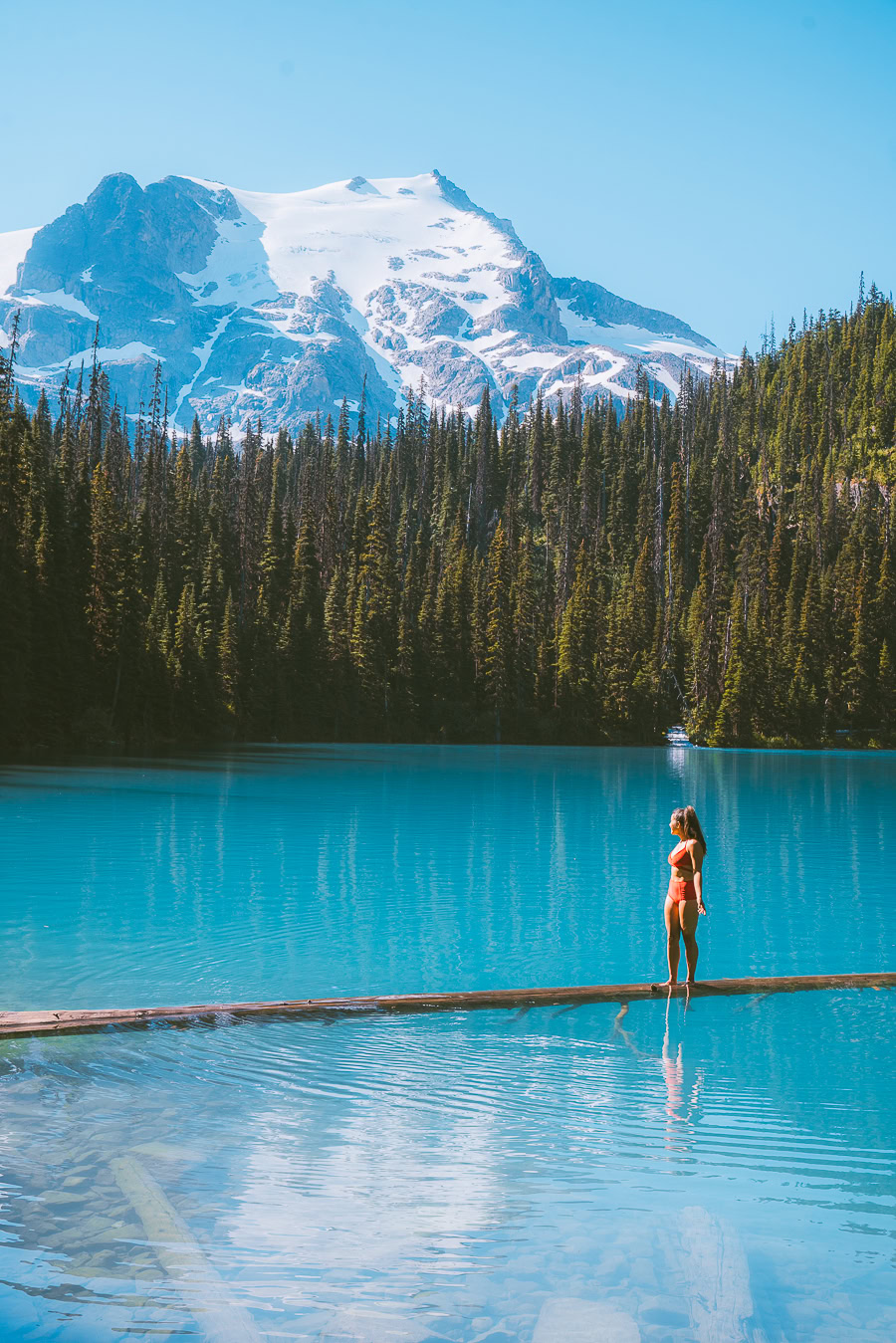
Yes, you can, but you must do so with extreme caution. Even in summer, the lakes are still extremely frigid, creating the possibility of hypothermia. If you do decide to swim, though, the middle lake is the most popular spot to do it.

Top Tip: People love jumping into the middle lake on at floating log, as it gives you some magical photo opportunities. So if you do go swimming, consider doing it here.
Are There Bears in Joffre Lake?
There’s a plethora of wildlife in the park, including grizzly bears, black bears, deer, and mountain goats. Summer is the best time to visit the park, but it’s also the time you’re most likely to encounter grizzly and black bears.
This is why it’s best to check out these wildlife safety tips and use the food storage units if camping on the trail.
What Towns Are Near Joffre Lake?
The closest town to Joffre Lakes is Pemberton, which is 31 km (19 miles) away. If approaching from the north, you’ll find the nearest town of Lillooet, roughly 69 km (43 miles) away.

PS: Pemberton is your best bet for nearby accommodation that’s high quality and affordable.
Is There a Shuttle Service to Joffre Lakes?
If you fly into Vancouver, you can get the Vancouver-Whistler-Joffre Lakes bus with ParkBus. Return tickets will cost you around $108 USD per person, with the trip taking around three hours. There is one stop in Whistler on the way to Joffre Lake.
Final Thoughts on Hiking the Three Joffre Lakes
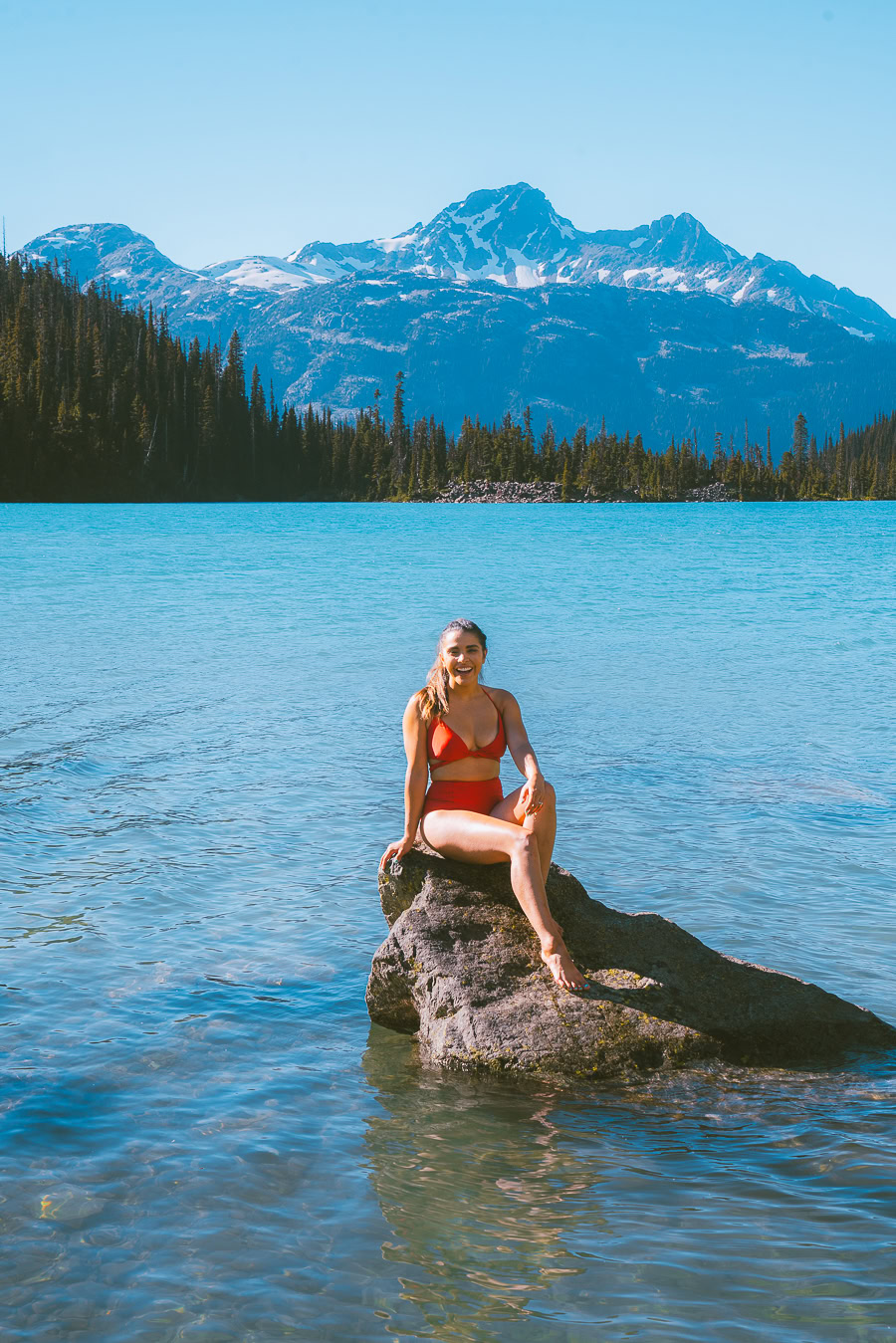
As you can see, there’s plenty for you to consider before embarking on this challenging hike. From how to get there to when to visit, you’ve now got all the information at hand to have an unforgettable Joffre Lakes experience.
Before embarking on your journey, have a look at the other amazing Canadian destinations in and around the park. There are some fantastic places you can visit that are sure to make your itinerary a jam-packed affair.
Until next time, happy hiking and safe travels!

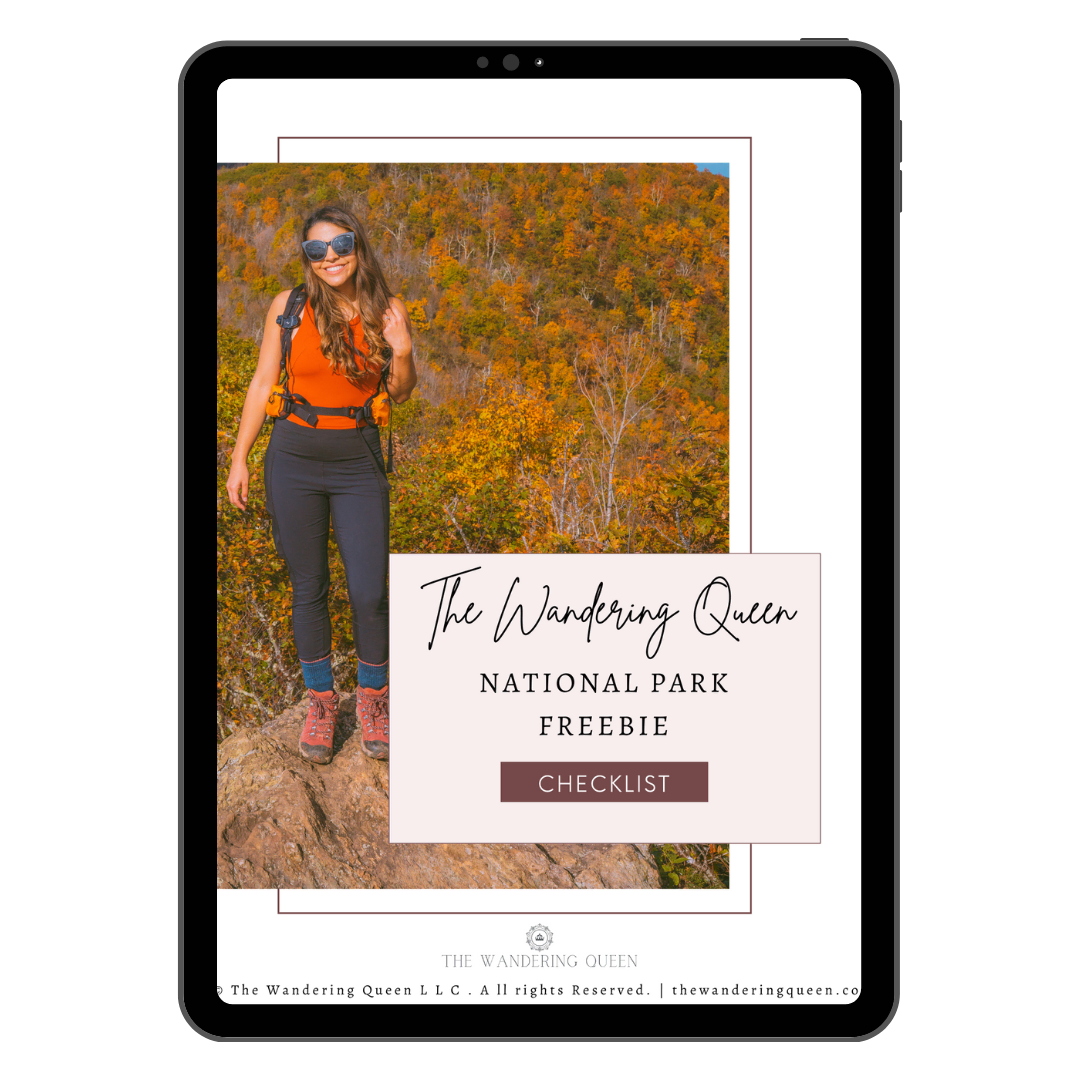
Get my free National Park Checklist
When you join the newsletter!
Pin For Later: Joffre Lakes Trail




